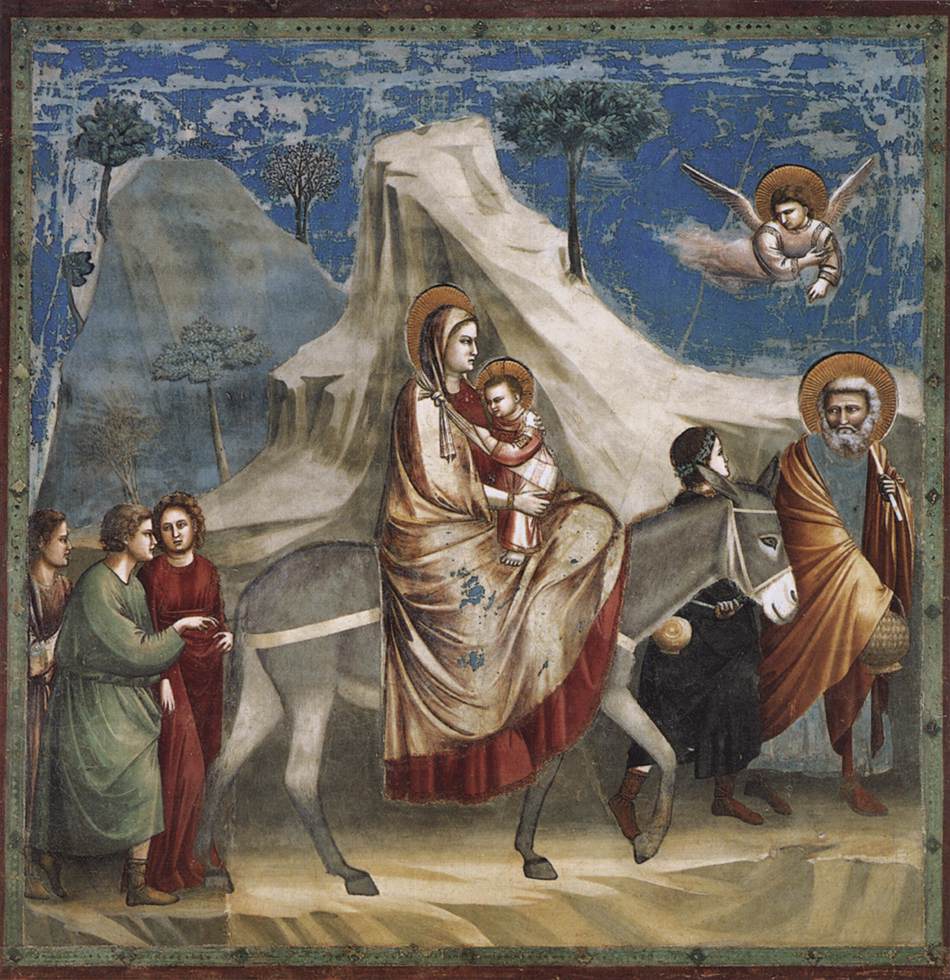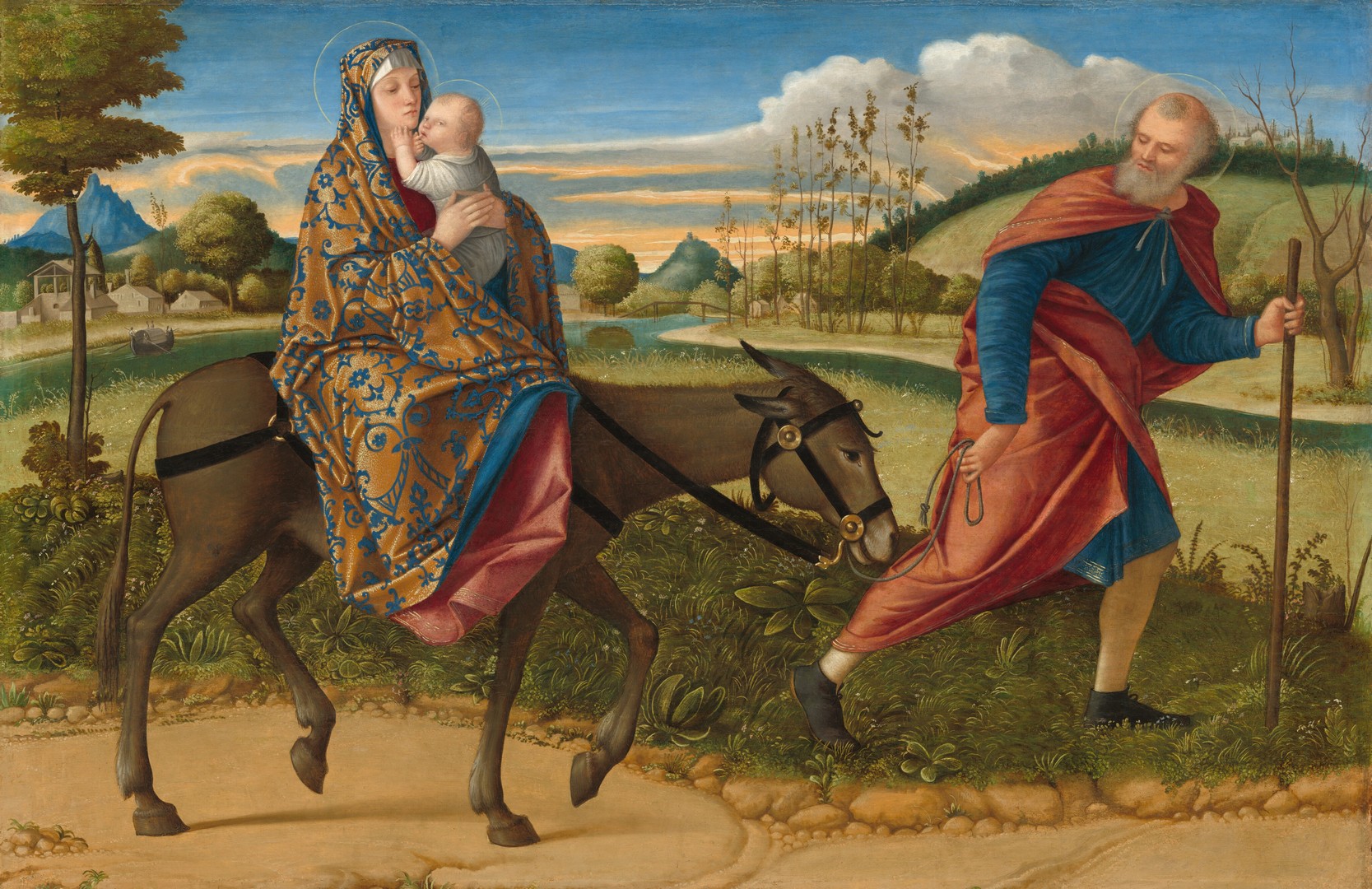Back to: Renaissance Art and the Christmas Story
Giotto – Flight into Egypt (1304-1306)

On a narrow rocky path, the procession to Eqypt seems to move past the viewer. Equipped with everyday objects, everyone is in motion, looking at one another and talking to one another – only the Virgin Mary sits still and unmoving holding her child.
The statuesque nature of her upright position is further reinforced by the rock. Her gaze is raised skywards, where the angel is pointing the way they should go, urgency in his indicating hand and the intensity of his gaze. Joseph leads the donkey, granted a halo for his part seemingly uncertain of his actions, but, presumably trusting that the heavenly messenger will see them right. This is one of the most dramatic settings of this story
The sky is a bright, deep blue and the ground appears to be almost chalk-white. This gives the whole image a cheerful and airy effect that is enhanced by the flattering drapes of fabric
There is a clear interaction between the figures in the fresco: as Joseph leads the donkey along Mary holds her baby and looks ahead at Joseph and one of the two anonymous figures in the back lays a hand on the donkey’s rump.
Giotto makes certain that all of the characters are connected to each other: from the white-robed person in the back to Joseph in front they form a living chain, Mary and Jesus in the dead center. The setting of all of them in the foreground is reminiscent of non-perspectival Byzantine art, but the dynamism in the characters’ interaction and motion is a very new development.
Giotto led the way toward three-dimensional art and natural movement with humans and acknowledging each other Giotto takes care to give the objects their correct stature and natural physical features.
Caravaggio – “The Rest on the Flight into Egypt” (1597)

The “rest scene” is based not on any incident in the Bible itself, but on a body of tales or legends that had grown up in the early Middle Ages around the Bible story
According to the legend, Joseph and Mary paused on the flight in a grove of trees; the Holy Child ordered the trees to bend down so that Joseph could take fruit from them, and then ordered a spring of water to gush forth from the roots so that his parents could quench their thirst. This basic story acquired many extra details during the centuries.
The Holy Family sits in a row, countered by the projection of the angel’s wings and by the recession of space into the distance. The brightly colored complex drapery patterns and the luxuriant foliage would give the picture a patchwork effect, had not Caravaggio been so skillful in subordinating detail to the whole. The story is an embellishment but the details are accurate of Northern Italy
Caravaggio shows Mary asleep with the infant Jesus, while Joseph holds a manuscript for an angel who is playing a hymn to Mary on the viol. This divides the composition into two parts.
On the right, before an autumnal river-front scene, we can see the sleeping Mary with a dozing infant in her left; on the left, a seated Joseph holding the musical score for the angel.
The Flight to Egypt – Vittore Carpaccio (1515)

Rather than focus on their urgent flight, Carpaccio shows the Holy Family mid-journey, their pace unhurried. Joseph urges the plodding donkey onward and looks back caringly at Mary and the child. The setting is tranquil, with dawn breaking over a lush landscape and a meandering river.
This story tapped into the growing popularity in sixteenth-century Venice of Saint Joseph as an ideal father. It also enabled Carpaccio to showcase his talent for depicting textures, from the donkey’s fuzzy fur to Mary’s almost metallic cloak. Such a family subject would have been appropriate for display in the home
